
This Nrich question tackles proportion in a real context. It also needs systematic thinking to sort out the information and take a step-by-step route to the solution.
- Subject:
- Mathematics
- Material Type:
- Activity/Lab
- Date Added:
- 06/17/2021

This Nrich question tackles proportion in a real context. It also needs systematic thinking to sort out the information and take a step-by-step route to the solution.

This Nrich activity offers free exploration that can help youngsters with their development of the concepts associated with fractions. It provides a chance for meaningful mathematical discussion and sharing of current understanding, in addition to offering opportunities for challenging misconceptions.
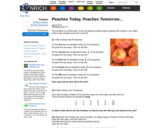
This Nrich problem is in three parts, with each part becoming more open-ended and requiring more reasoning, giving students a chance to develop their skills at solving problems with fractions and then applying those skills in a more challenging context. By listening to others' approaches, students will be encouraged to persevere and continue to improve on their solution to the final part of the problem.

In this Nrich problem students apply their knowledge of area and percentages to extend their understanding.

This Nrich problem is a good challenge for those children who are competent with calculating using fractions and decimals.

In this Nrich problem students extend their understanding of percentages in a multi-step real world situation.
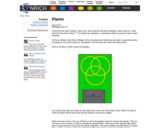
In this Nrich activity, students explore combinations in a situation with constraints. The combinations are complicated by sets and subsets. The situation uses a Venn Diagram.
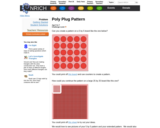
Students create and extrapolate patterns on an array for this Nrich activity.

Students will discuss works of art that have grotesque elements and symmetry in their design. They will identify symmetry and line in grotesques. Students will create symmetrical designs for a pilgrim bottle and also design a door panel using grotesques. They will then analyze William Blake's poem "The Tiger" and write their own grotesque-inspired poetry.

This problem gives practice in calculating with percentages. It can be approached by trial and improvement but the equivalence between fractions and percentages is very useful.
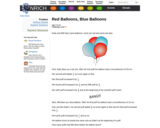
This problem would be a good one when doing calculations with fractions. It also requires logical thinking and organizing of results. Different strategies and approaches can be taken: knowledge of addition, or multiples, or an understanding of fractions can be used to arrive at a solution.

This Nrich problem offers carefully chosen examples intended to give students the opportunity to prove that any recurring decimal can be written as a fraction. Together with the problems Terminating or Not and Tiny Nines, this problem offers valuable insights into the relationship between fractional and decimal representations.

This problem confronts students with the idea that when collecting data to try to answer a question it is important to identify all the relevant variables, and that an over-simplistic analysis with a limited amount of information can lead to the wrong decisions.
The problem also offers the opportunity for students to practice calculating ratios, percentages and proportions.
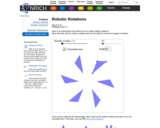
This Nrich problem appears at first to be about angles and rotations, but as students explore more deeply, they may be surprised to discover links to factors, multiples and primes. The images and interactivity provide an enticing hook to stimulate students' curiosity.

The concepts of stability and equilibrium are introduced while students learn how these ideas are related to the concept of center of mass. They gain further understanding when they see, first-hand, how equilibrium is closely related to an object's center of mass. In an associated literacy activity, students learn about motion capture technology, the importance of center of gravity in animation and how use the concept of center of gravity in writing an action scene.

Students use a variety of properties concerning circles and sectors to justify statements.

This Nrich activity provides a meaningful task for practicing rounding two-digit numbers to the nearest multiple of 10. It encourages children to record their results, notice patterns and make predictions.
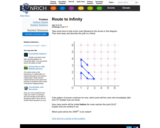
In this NRich activity students will analyze a pattern on a coordinate plane in order to make predictions.
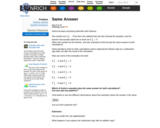
This Nrich problem lets you spot misconceptions your students have about subtraction and division of fractions, while giving students an opportunity to practice the procedures in an intriguing context - students' curiosity will be raised by the strange patterns in the calculations, and we hope they will yearn to explain what is happening.

This Nrich problem is a good opportunity to encourage children to have a system for finding all possible solutions. It is also an ideal context in which to help children deepen their understanding of factors and multiples in a playful environment.